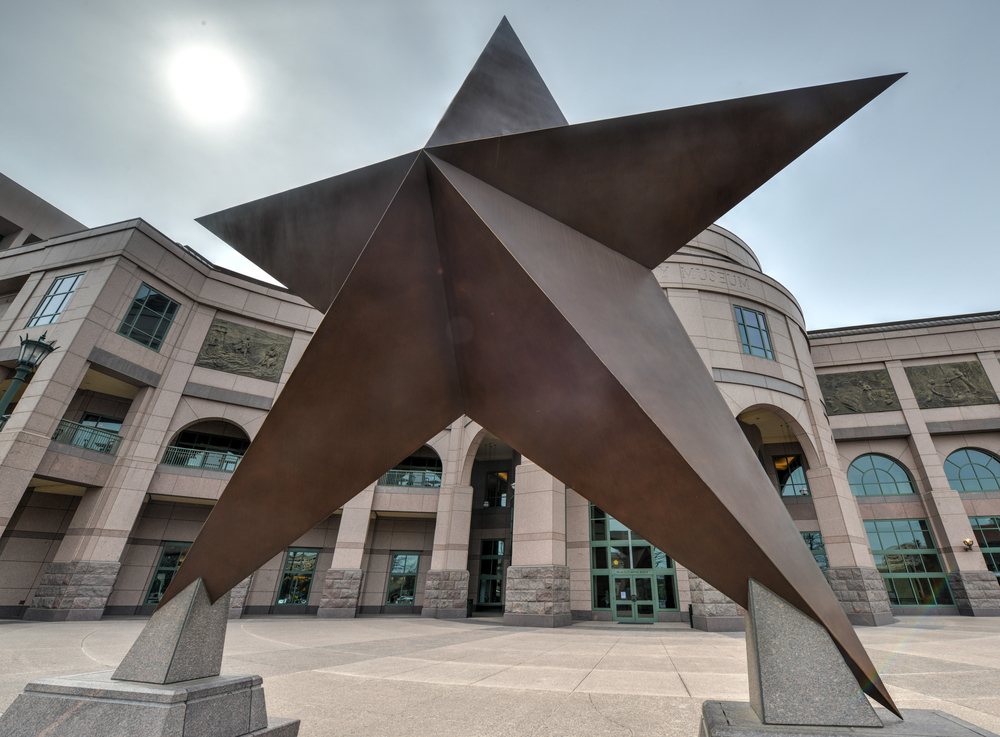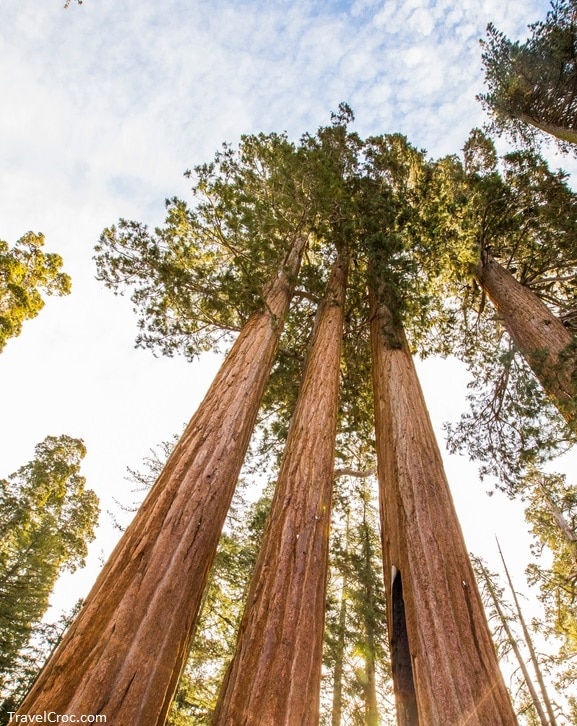
What is the best time to visit Sequoia National Park? Let’s find out!
Sequoia National Park is a very popular destination and for very good reasons. Nestled in central California, Sequoia National Park is home to the world’s largest trees: sequoias! In fact, sequoias are also the world’s largest living things by volume.
These giant ancient beings can grow to about 30 feet (9 meters) in diameter and more than 250 feet (76 meters) tall. The largest of these, the General Sherman Tree, weighs an incredible 2.7 million lbs (1.2 million kilograms). This is more than 6 times the weight of a blue whale, the largest animal on Earth.
Could you even imagine?
It truly is one of those places that move you so powerfully, while making you feel humbler and more connected to something much greater.
It is no wonder that the park attracts over a million visitors every year. This is a spectacular destination that you need to visit at least once in your life.
So, without further ado, here’s when you should plan your next trip.
Best Time to Visit Sequoia National Park
The best time to visit Sequoia Park depends on the kind of experience you’re after. It depends on the scenery, activities, tolerance to crowds, and the wildlife you’re interested in seeing, among other factors. So, depending on what you’re looking for, here is the best time to visit:
Best Time to Visit General Sherman Tree
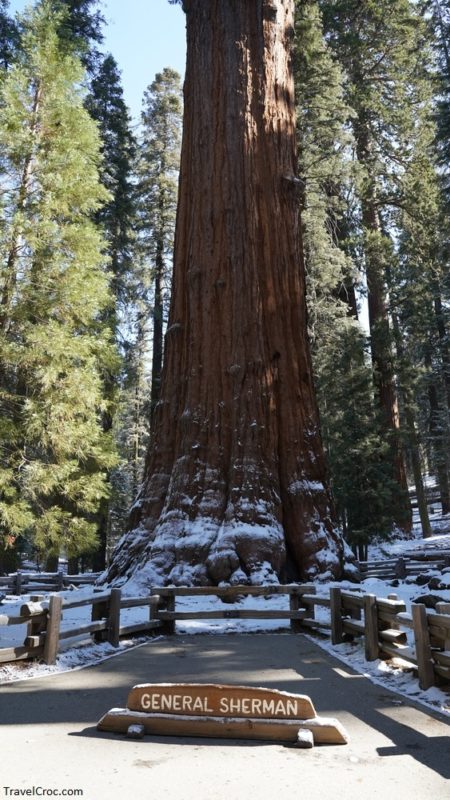
The best time to visit General Sherman Tree, the largest tree in the world, is generally between late spring to early fall. During that time, the weather is ideal for a hike to reach the tree, free of snow.
This time, however, tends to be the busiest, especially between July and August. If you are looking for more adventure away from the crowds, you can instead visit in Winter. During that time, you will have the tree to yourself, but snowshoeing or cross-country skiing is typically required.
Best Time to Visit Moro Rock
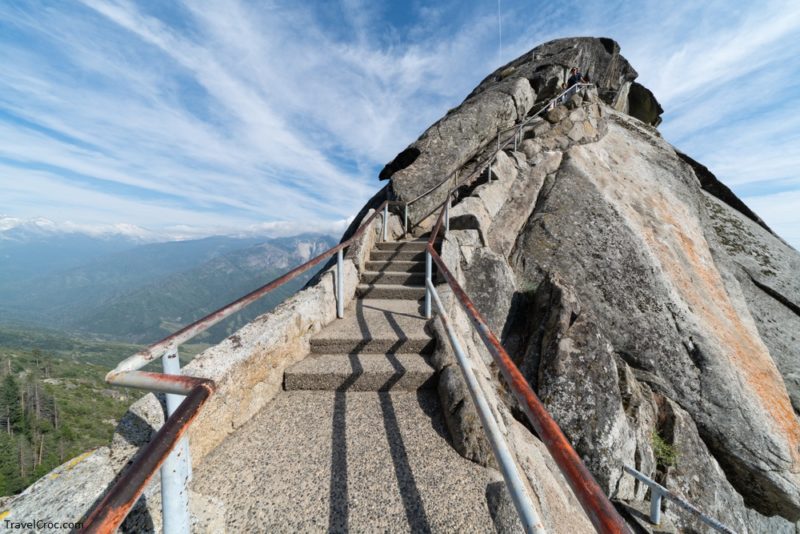
Moro Rock is a granite dome standing high as an impressive geologic feature that can be viewed from above or below. You will not miss it as you enter the park, looming high above.
The best time to visit Moro Rock is from May until October. If you’re looking to avoid the crowds however, it is best to visit outside of the July/August peak season.
The 0.8km hiking trail starts from the Moro Rock parking lot and traverses a narrow, steep staircase to the summit.
During summer months, you can catch a free shuttle to get to the trailhead. On weekends, the road closes to private vehicles.
In winter, ski trails lead to the parking area, but you cannot carry on further. The trail to go up is closed due to bad weather and hazardous conditions.
Recommended Reading:
Things To Do in Ontario CA – The Ultimate Fun Guide!
Best Time to Stay at Wuksachi Lodge
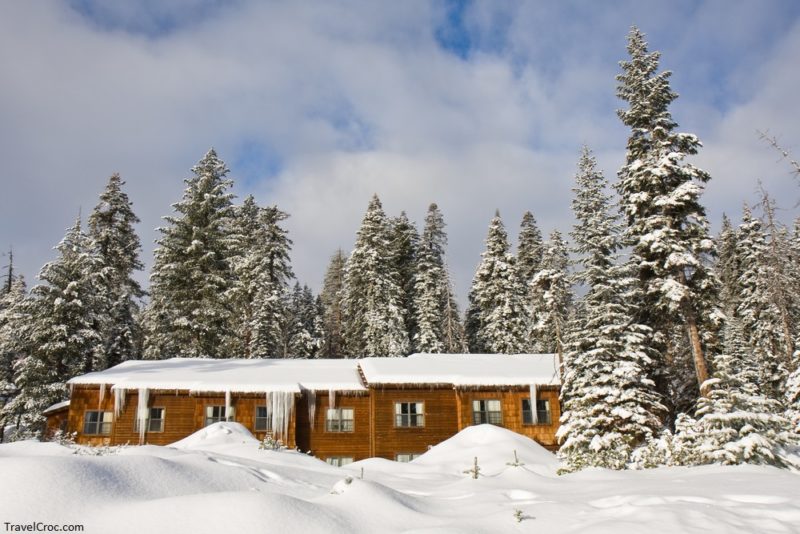
The best time to stay at Wuksachi Lodge is during summer months. Although the lodge is open year-round, it is most accessible during that time. This is because many roads are otherwise closed in the winter.
If you plan to visit during harsh, winter weather, you must factor in snow vehicles or snow chains.
The 102-room lodge is conveniently set in the forest area, near General Sherman and hiking trails to Lodgepole, Cahoon Meadow, and Twin Lakes. Its amenities include a restaurant and a cocktail lounge.
Best Time to Visit Sequoia National Park to Avoid Crowds
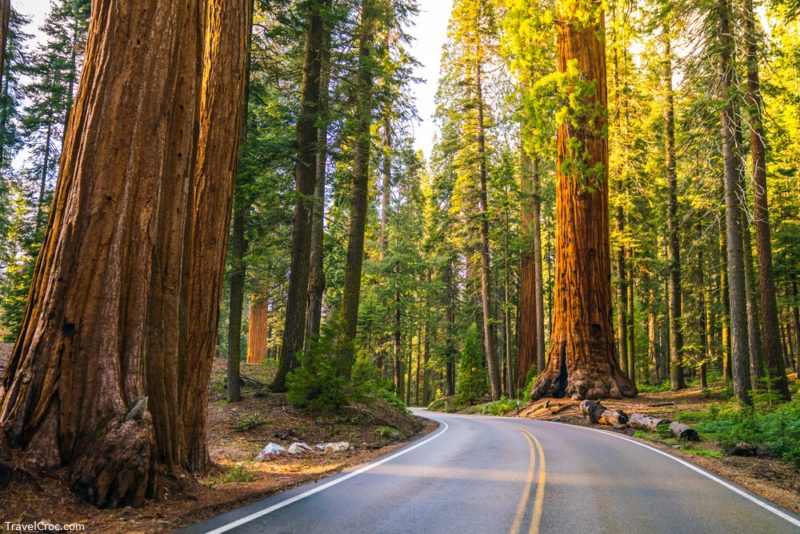
The busiest time at the park is generally in the summer, specifically between July and August. The best time to visit Sequoia National Park to avoid crowds is therefore from November to April.
These months are usually snowy and much colder, which puts off a lot of visitors. Many roads are also closed during that time.
However, if you’re looking for more of an adventure, winter is a great time to visit. If you can put up with the weather, you can dwell in the magical realm of the park all by yourself.
Winter is also a great time if you’re into snowshoeing or cross-country skiing throughout the Giant Forest.
Best Time to Visit Sequoia National Park for Hiking
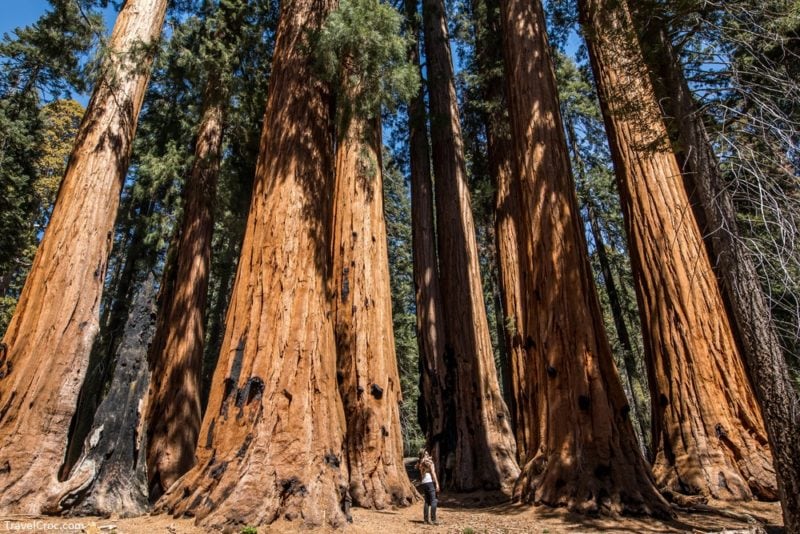
Unless you’re interested in snowshoeing, the best time to visit Sequoia National Park for hiking is in the summer, between June and August. By June, all roads at the park reopen, and temperatures are perfect for hiking in regions with higher elevation.
As I mentioned though, this tends to be the busiest season. So, brace yourself, and be prepared to share your Sequoia experience with a bigger crowd.
I would advise you to wear layered clothing as weather differs across elevations. It can get pretty chilly the higher up you go.
Hiking Trails
- General Sherman Tree (0.5 miles)
- The Congress Trail (2.9 miles)
- Moro Rock (0.4 miles)
- Hazelwood Nature Trail (1 mile)
- Converse Basin – Boole Tree (2.5 miles)
- Big Trees Trail (1.2 mile)
- Crescent Meadow Loop Trail (1.8 miles)
- Congress Trail (2 miles)
- Tokopah Falls Trail (3.4 miles)
- Alta Peaks Trail (7 miles)
- High Sierra Trail to Bearpaw Meadow (11.5 miles)
Best Time to Visit Sequoia National Park for Camping
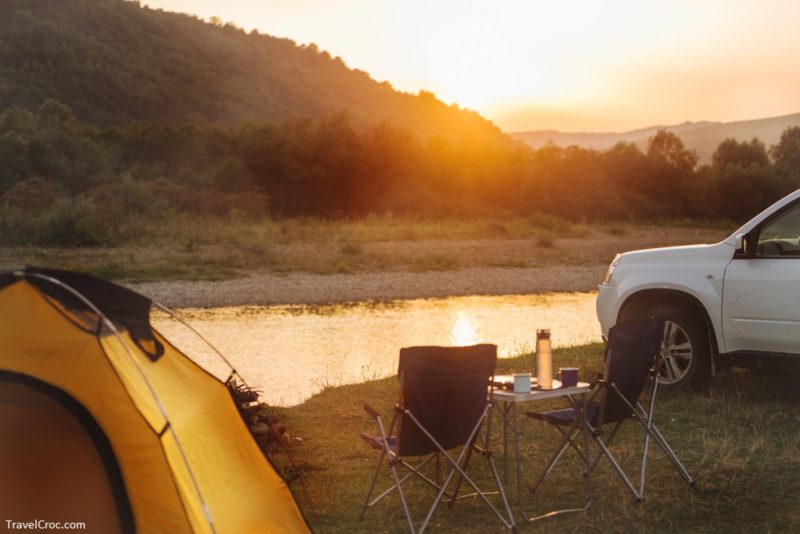
The best time to visit Sequoia National Park for camping is during the summer months, between June and August. This is the ideal time in terms of weather, which is an important consideration if you’re camping.
There is generally little to no rain during summer months, but don’t be surprised if you experience the occasional afternoon thunderstorms.
I must warn you, however, that camping in the foothills during that time might not be the best idea due to scorching heat. I would therefore advise you to set camp in higher elevations, which tend to be cooler and more pleasant.
If you’re looking to camp in the foothills, you are better off doing so in either late spring or mid-to-late fall.
Best Time to Visit Sequoia National Park for Snowshoeing
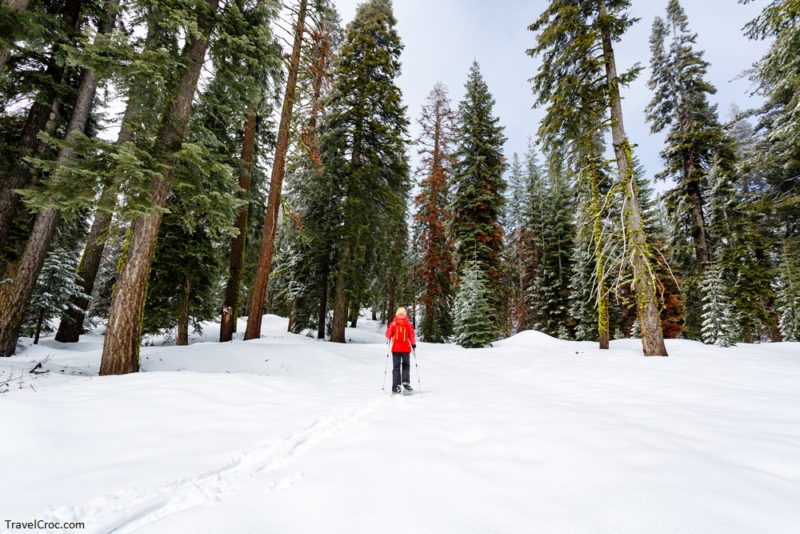
Obviously, the best time to visit Sequoia National Park for snowshoeing is in the winter when there’s snow. To be more accurate, you can visit anytime between late fall to early spring, from November to April. The most popular time however, is between January and February.
During that time, park rangers offer free 1 – 2 hour guided snowshoeing trips, which are open to visitors over the age of 10.
This is a great time to visit for you can enjoy snowy and peaceful sequoia groves at higher elevations in solitude. You can even see wildflowers, which begin to bloom on foothills as early as January.
Best Time to Visit Sequoia National Park for Climbing
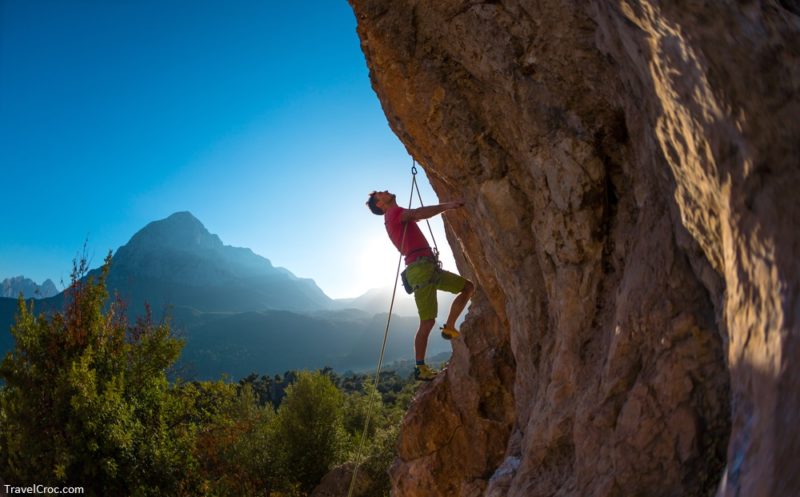
Sequoia National Park offers a lot for those interested in climbing, for all varying levels of experience. The best time to visit Sequoia National Park for climbing is late summer and early fall, between August and September.
These months have cooler temperatures and therefore bring less crowds compared to busier summer months. Keep in mind, however, that most climbs here require a day’s hike in.
The most popular option is Moro Rock, but there’s also other places like Chimney Rock.
Do note that both rocks are closed in the peregrine nesting season between April 1 and August 15. These closures protect peregrine falcons as they nest and raise their young.
Best Time to Visit Sequoia National Park for a Scenic Drive
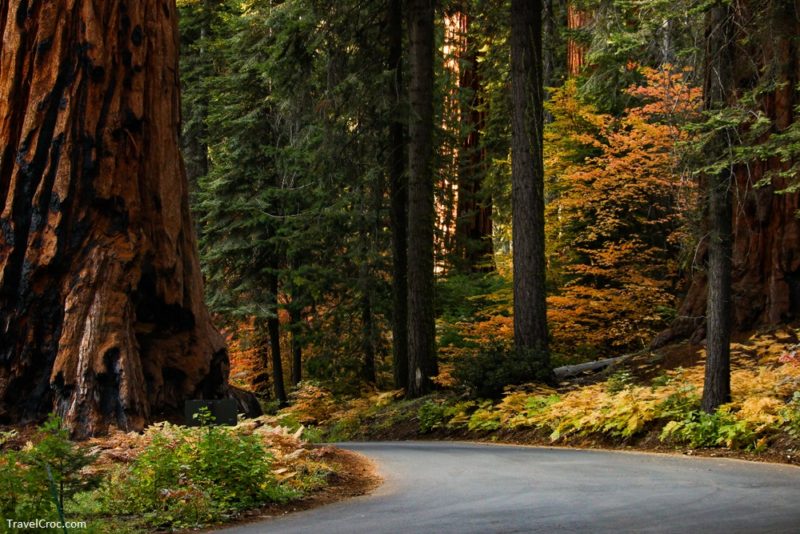
The best time to visit Sequoia National Park for a scenic drive is between late spring and early fall. More specifically, if you want to see wildlife and bears, your best bet is to go in May.
Otherwise, I would advise you to stick to August and September. By this time, most of the snow on the roads would be gone, which makes for a smooth, easy trip.
Do note that many roads are closed off in the winter due to snow and ice, so embark on a winter road trip with caution, an appropriate car, and at your own risk.
Recommended Reading:
Best Time to Visit Zion National Park By Months and Crowds
Sequoia National Park Weather
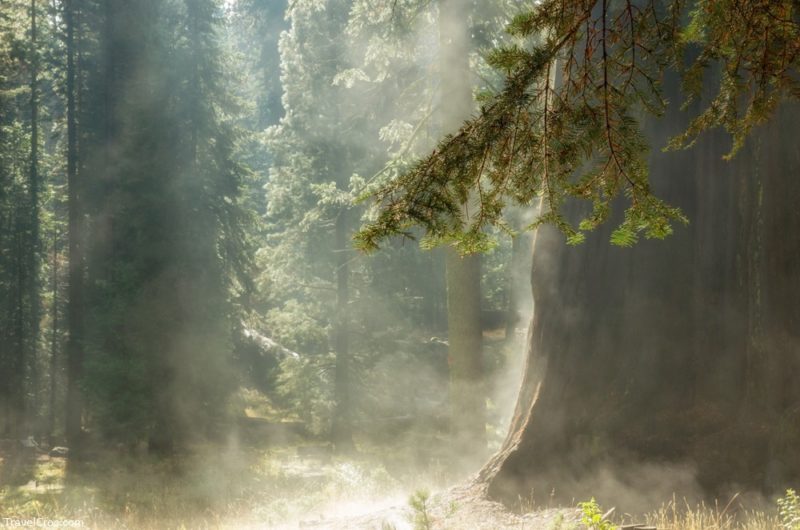
Sequoia National Park weather is one of the most important considerations for many with regards to choosing the best time to go.
Primarily, seasons dictate weather conditions, but they are not the only factor. Weather conditions also vary across different elevations. These are generally divided into: foothills, which tend to be warmer; and groves, which are higher, and therefore, cooler.
Here’s a breakdown of what to expect across the different seasons and months.
Spring Months
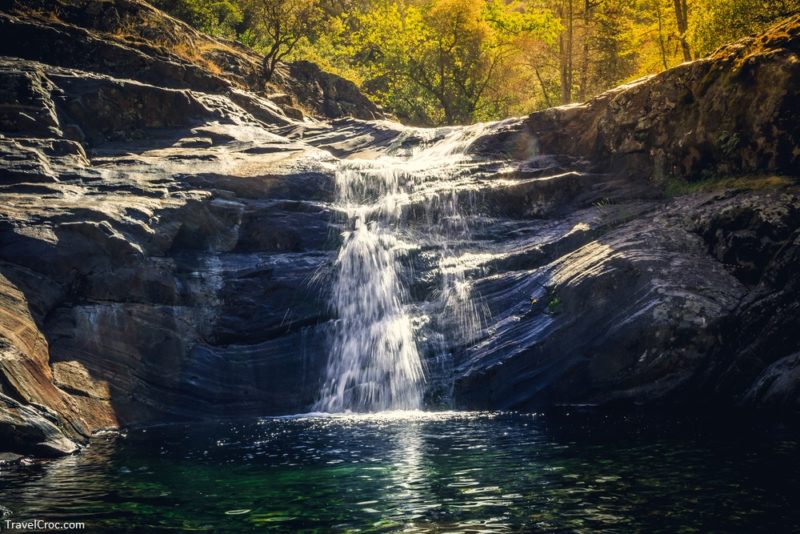
At Sequoia, spring runs from March till May. During that time, the weather starts to get warmer. The groves however, will likely still be filled with snow that is slowly beginning to melt. Late spring snowstorms are common, so you should always check the weather forecast before going.
Many park campgrounds like those in the Grant Grove area, are closed till May, and many creeks fill with cold runoff water and become swift.I would advise to avoid them as hypothermia is a real concern.
In the foothills, however, you will find warm weather and beautiful wildflowers in full bloom.
This is also the best time to check out waterfalls like Tokopah Falls and Mist Falls, which flow most strongly during this time.
March
Of the spring months, March generally has the coldest weather in Sequoia National Park. Temperatures are low in higher elevations, and tend to get cooler at night in lower elevations.
March is actually the wettest of all months in Sequoia, according to the Weather Channel.
In the lowlands, temperatures are typically in the low 60s during the day and low 40s in the evening.
Between the lowlands and the highlands is the forest belt, sitting between 4,000 and 7,000 feet. Here, temperatures are 20 degrees fahrenheit lower than the lowlands, with evening temperatures below freezing.
In the highlands, north of 7,000 feet, temperatures remain below freezing throughout the month.
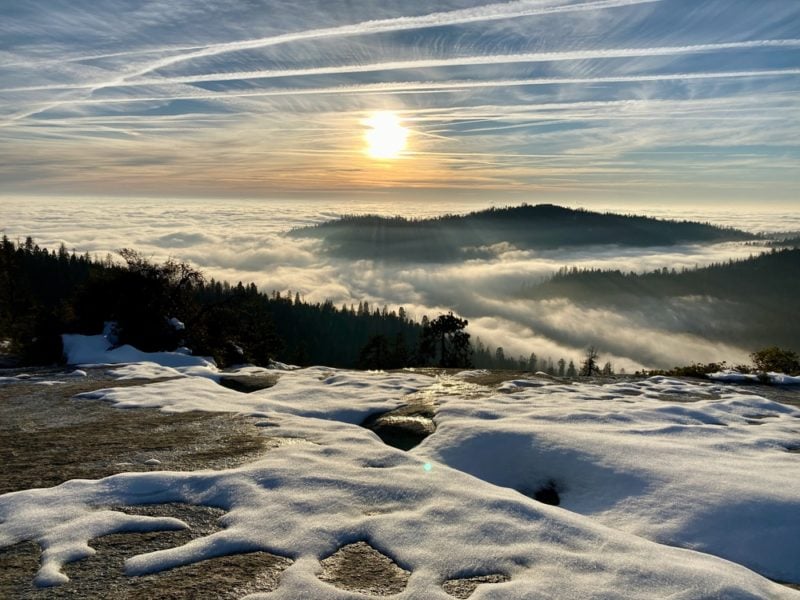
April
April tends to bring warmer weather and less rain compared to March, but it’s still cold and snowy in the highlands.
In April, the foothills are awash with spring colors and wildflowers. Daytime temperatures are in the mid 70s or higher, with lows in the 40s.
In the highlands, daytime temperatures usually hover in the 50s, dropping to the 30s in the evening.
May
By May, spring is in full swing in the foothills, with lush green grass and colorful blooming wildflowers. Many people consider May as the best time to visit Sequoia National Park.
During that time, temperatures are warming, wildlife is active, waterfalls and streams are flowing, most campgrounds reopen, and summer crowds have not yet arrived.
In May, temperatures at the foothills range between 50 – 80 degrees, on average. In the highland groves, they hover between 35 and 60 degrees.
May is a great time to explore the Sequoia groves, with no crowds, if you can deal with mild weather.
Recommended Reading:
National Parks in Nebraska – Top 10 Best Parks to Visit
Summer Months
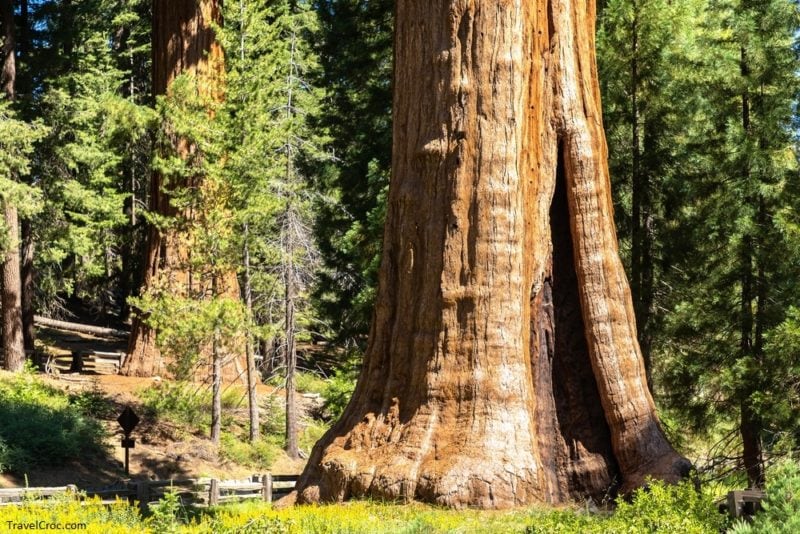
Summer is usually the most popular time to visit Sequoia National Park. This season brings warm, sunny Californian weather, very pleasant for most hikers and campers.
Foothills tend to be scorchingly hot, but the sequoia groves have comfortable, pleasant weather.
Since this season tends to be the busiest, I strongly recommend you reserve camping grounds or lodgings in advance. Also, be prepared to pay higher prices this season.
June
The weather in Sequoia National Park in June is tropical though snow is still possible at higher elevations.
June has perfect weather for hiking at higher elevations, with temperatures between 45 and 70 degrees.
In the foothills, average highs reach the 90s, which can be dangerous without proper hydration and sun protection.
June is an ideal time to visit popular spots like General Sherman and Moro Rock before they become overly busy.
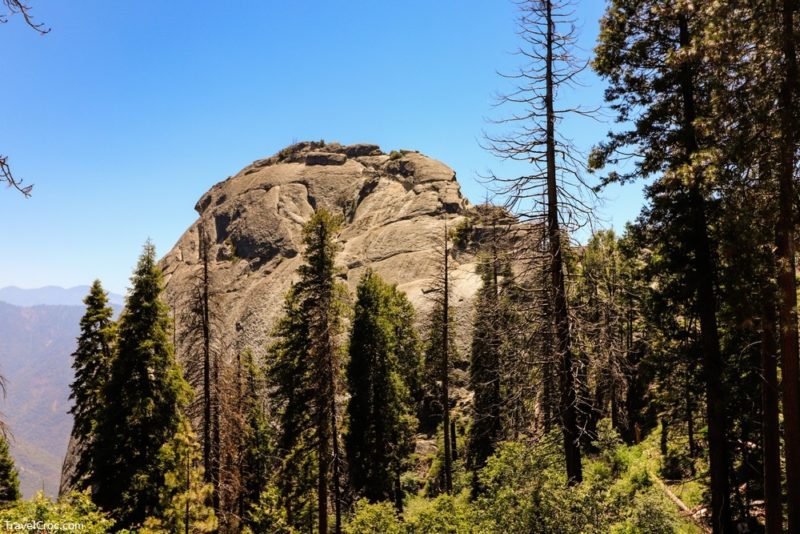
July
The second month of summer at Sequoia Park is very hot and dry. This is the busiest and most popular time to visit.
July is also the warmest month of the year, with average highs at 95 degrees and average lows at 64. It is one of the sunniest and driest months in Sequoia.
I should warn you that popular hotspots like General Sherman and Moro Rock tend to get very busy in July.
August
August, like July, is a pretty popular time to visit Sequoia National Park. During this month, the weather is typically warm and dry in the highlands and scorchingly hot in the foothills.
Sequoia National Park weather in August is the driest of them all, which makes this month a high-risk time for wildfires. This is a great time to explore the sequoia groves for good weather.
On average, temperatures reach highs of 76 and lows of 44.
Recommended Reading:
Kootenay National Park | Amazing Destination You Must Visit!
Fall
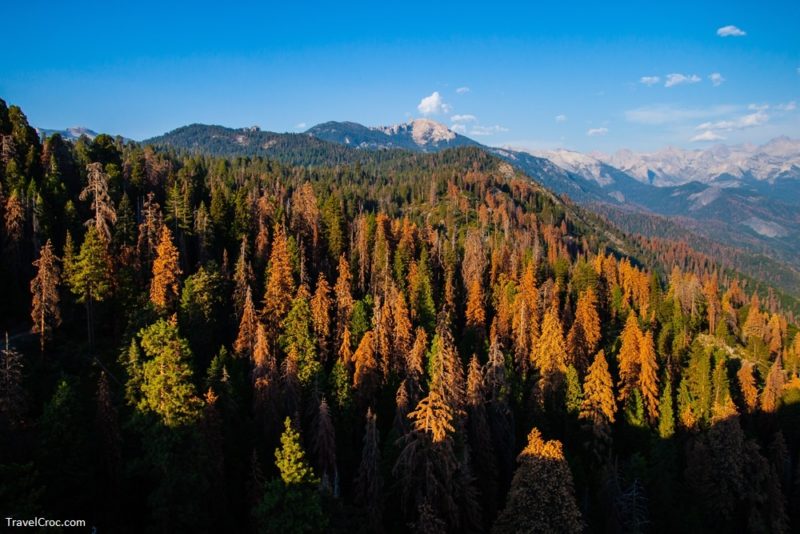
Fall in Sequoia National Park is absolutely magical. Fans of fall foliage can marvel at the beauty of leaves changing colors this time of year.
Many park campgrounds close in the fall as roads begin to become treacherous.
The weather changes quickly this season, with hot summer days quickly turning to stormy ones.
In the higher elevations, snow typically begins in late October to early November.
This is one of the best times to visit Sequoia National Park for those looking to avoid the crowds. It also provides very pleasant hiking weather in the foothills, which are otherwise too hot in the summer.
September
In September, temperatures start to cool off, albeit the foothills are still warm. The rainy season hasn’t started yet, and conditions are still mostly dry.
Due to that, this month poses higher risks of wildfires, so expect fire bans to be in place this time of year.
Temperatures vary between highs of 90 degrees to lows of 60.
This is a great time to camp at higher elevations like Lodgepole.
September is a great time to visit the park without the crowds. I highly recommend checking out popular spots like the General Sherman Tree during this time. Park roads remain open throughout the month.
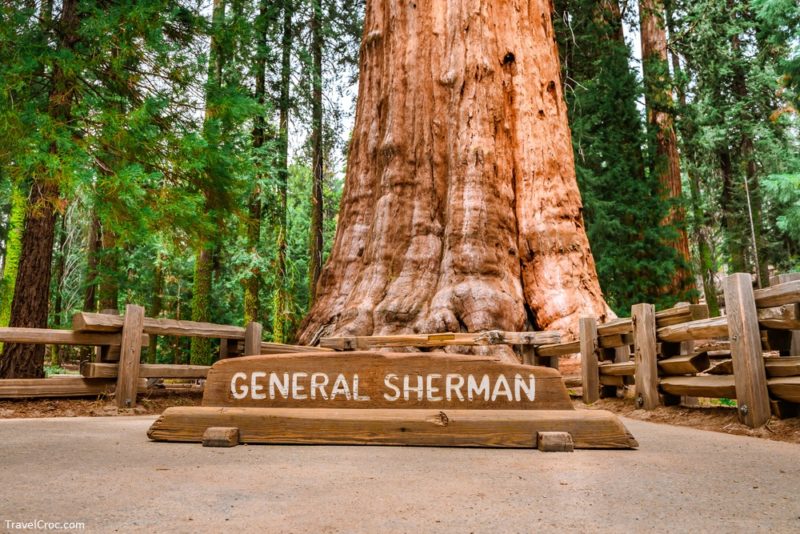
Huge sequoia General Sherman in Sequoia Park in the USA
October
In October highs fall from tropical levels to moderately hot ones. Typically, the weather ranges between a max of 76.5 degrees and a min of 53.1.
Specifically, in the foothills, daily highs are more comfortable and evenings are cool. In the sequoia groves, the weather is crisp during the day and cold at night.
Snow begins to fall in the sequoia groves later this month, and Crystal Cave closes. Crowds are much fewer. This is a great time to visit if you’re looking for solitude and zen, especially in the foothills where the weather will be more bearable.
November
November months provide a sneak peak into winter at Sequoia National Park, especially in the higher elevations. The weather drops and temperatures reach below freezing at night. Expect to find over a foot of snow on average.
Temperatures range from average lows of 45.7°F to average highs of 65.3°F, and rain is more common than the past few months.
This is a great time to camp or hike in the foothills, where weather is milder during the day but cold at night. If you don’t mind the cold and a bit of snowfall, you can also explore the groves in November.
Recommended Reading:
National Parks in Kansas – 10 Parks You Must Visit in Kansas!
Winter
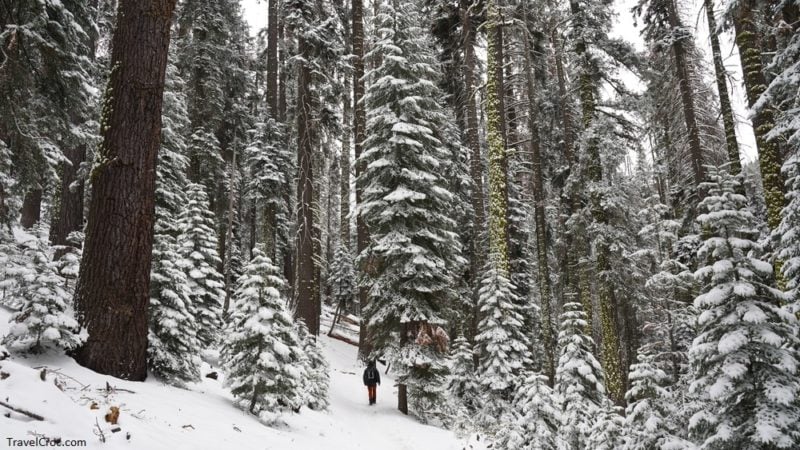
Winter is the coldest of all seasons, bringing snowy, peaceful tranquility. This season is popular with those interested in winter sports like snowshoeing or skiing.
In winter, many sequoia groves are only accessed by all-terrain vehicles, and much of the park is closed to regular vehicles. Tire chains and proper snow gear are required when visiting the park during that time.
December
December is actually the least popular month for visiting Sequoia National Park. It tends to be very cold and snowy, particularly in the sequoia highlands.
On average, temperatures hover between highs of 65.3°F and lows of 39.7°F.
This could be a great time to visit if you’re looking to marvel at the snow-covered giants in complete and utter silence and solitude.
January
Of the winter months, January is the busiest. This is a popular time to visit the park for snowshoeing and cross-country skiing.
Many trails are open, and the park offers shuttle services throughout the Giant Forest area for winter visitors.
In January, the weather in Sequoia National Park ranges between a max of 58.3°F and a min of 40.6°F.
February
In February, the park continues to see cold, snowy weather, and many roads remain closed. As in other winter months, you should bring tire chains, proper snow gear, and suitable vehicles.
Much like January, February is another popular time to visit for winter sports and activities.
The weather is similar to that of the previous month with average highs of 59.2°F and average lows of 40.6°F.
Recommended Reading:
Shenandoah National Park Waterfalls | 10 Spectacular Falls You Must See!
Frequently Asked Questions (FAQ)
Curious to know more about visiting Sequoia National Park? Here are the answers to some of the most commonly asked questions about this natural wonder.
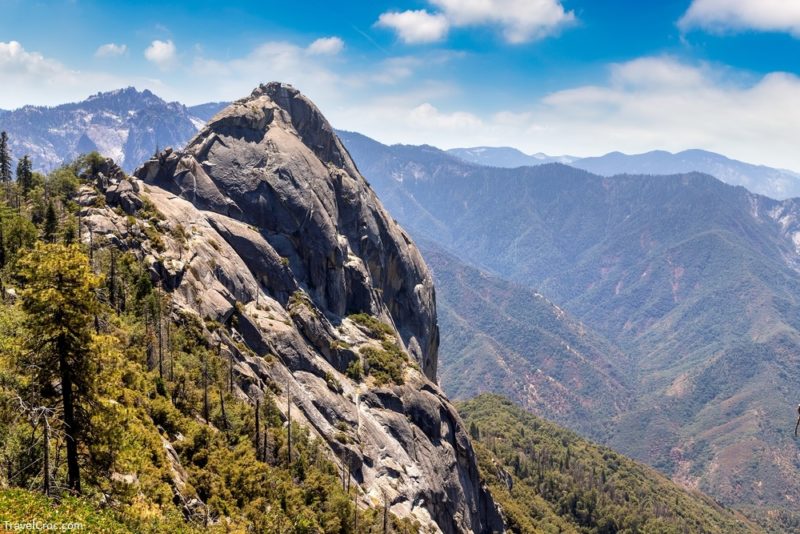
How many days do you need in Sequoia National Park?
You could spend anywhere between a day to see the main attractions up to two weeks to really take in all that the park has to offer.
What months is Sequoia National Park open?
Sequoia National Park is open 24/7, year-round, but many roads are closed in winter months. This makes many places only accessible by foot during that time. Likewise, different seasons bring different challenges. Identify your priorities, research thoroughly, and plan accordingly.
Is April a good time to visit Sequoia National Park?
April is not normally one of the most popular months to visit the park, but the flip side is that you’ll have the place for yourself. This month is a great time to see the spring wildflowers in full bloom and streams and waterfalls in full flow.
What to know before going to Sequoia National Park?
The closest airports to the park are Visalia and Fresno.
Also, entrance to the park is $35 per vehicle, or $20 per person for pedestrians and cyclists. This pass is valid for 7 days for both Sequoia and Kings Canyon parks.
Beware of bears; there is no cell service; check the weather; bring a flashlight; and if possible, make reservations.
Conclusion
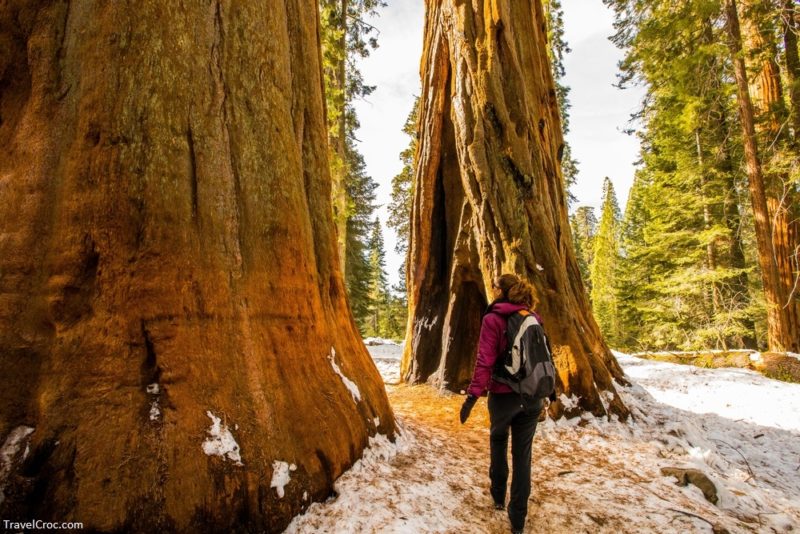
In conclusion, the best time to visit Sequoia National Park for most people is between July and August. However, each season, or month, is unique and special in its own way, providing different activities and experiences.
Sequoia National Park is beautiful year-round, so no matter what time of the year you pick to go, you will have a unique experience.
Recommended Reading:
State Parks in Upstate New York | 15 Best Upstate New York Parks
Ojai Hiking Trails for all Levels | 12 Amazing Trails to Experience

